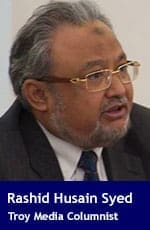 Saudi Arabia is back in its role as the swing crude oil producer of the world.
Saudi Arabia is back in its role as the swing crude oil producer of the world.
Until recently, the nation has insisted it wouldn’t unilaterally cut output until others, including Russia, agreed to contribute.
But all this changed – almost overnight.
On Jan. 4, while the ministers from Organization of Petroleum Exporting Countries and its allies in the extended OPEC+ met to decide their February output, Saudi Arabia warned against unleashing more barrels on a fragile market.
Prince Abdulaziz bin Salman, the kingdom’s oil minister, insisted that joint efforts to restrict production and manage the sharp fall in demand due to the COVID-19 pandemic had to be maintained. “Do not put at risk all that we have achieved for the sake of an instant, but an illusory, benefit,” he added.
Russia didn’t agree. It wanted to raise total output by 500,000 barrels per day (bpd). With no consensus, the OPEC+ talks had to be extended until the next day.
The issue was whether OPEC+ would increase production in February or agree to keep total output at the current level.
It was a tough call.
OPEC also needed to take into the account the growing output from Libya, Iran and Venezuela. All these countries are currently exempt from output quotas.
An output hike could be disastrous, OPEC stressed. “Amid the hopeful signs, the outlook for the first half of 2021 is very mixed and there are still many downside risks to juggle,” OPEC secretary general Mohammad Barkindo said a day prior to the ministerial meeting.
“Curbs on social and economic activity remain in place in a number of countries, and there is concern about the emergence of a pernicious new strain of the virus,” Barkindo said. He said the global economy could strongly rebound in the second half of 2021, but sectors such as travel, tourism, leisure and hospitality could take years to reach pre-virus levels.
Even Iran appeared cognizant of the changing global oil dynamics. On Jan. 2, the Iranian news agency reported that the nation’s parliament decided to lower its oil export target from 2.3 million to 1.5 million bpd, terming the original target unrealistic. This despite the fact that with the change in administration in the United States, there are growing signs of rapprochement between Iran and the U.S. Yet the Iranian parliamentary committee still decided to keep the price base for the government calculations at US$40 a barrel.
But the Saudis didn’t want to take any chances. On Jan. 5, surprising everyone, Saudi Arabia pledged to unilaterally cut its output by one million bpd in February and March.
And so a deal was struck.
Most players agreed to keep output steady at current levels. Russia and Kazakhstan, however, were provided with some face-saving: they can add a combined 75,000 bpd of output in each of those months. This increase would barely register on the market, Iranian Oil Minister Bijan Namdar Zanganeh said.
This must not have been an easy decision for Saudi Arabia. The Saudi oil minister emphasized that the decision to cut output was made unilaterally by Crown Prince Mohammad bin Salman, the de facto ruler of the oil kingdom.
With the Saudis’ cash constraints growing, they opted for short-terms gains. But in the process, they decided to push aside the market share battle – at least for the time being.
Despite not wanting to, Saudi Arabia is back in its role as the swing global oil producer.
Toronto-based Rashid Husain Syed is a respected energy and political analyst. The Middle East is his area of focus. As well as writing for major local and global newspapers, Rashid is also a regular speaker at major international conferences. He has been asked to provide his perspective on global energy issues by both the Department of Energy in Washington and the International Energy Agency in Paris.
For interview requests, click here. You must be a Troy Media Marketplace media subscriber to access our Sourcebook.
The views, opinions and positions expressed by columnists and contributors are the author’s alone. They do not inherently or expressly reflect the views, opinions and/or positions of our publication.


